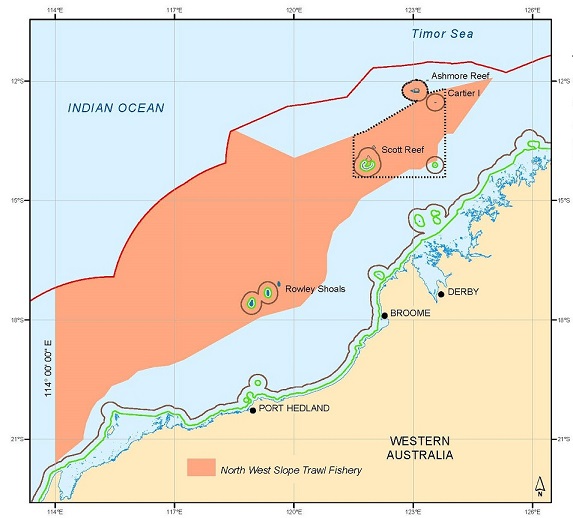Scampi are a small, orange/pink prawn like animal with long, thin claws.
Scampi can be cooked on the barbeque in their shell by cutting in half, drizzling with oil/butter and seasoning with salt and pepper.
Scientific name: Metanephrops australiensis
Family: Nephropidae
Other names: Northwest scampi, northwest lobster
Description: Scampi are a small, prawn-like animal with long, thin claws. The body is orange-pink. The carapace is spiny and has a distinct postorbital spine behind the eye. The upper side of the tail fan is spiny. Legs and claws may be strongly ridged.
Size (length and weight): Up to about 18 cm in length. Females grow slightly larger than males.
Life span: Up to 10-12 years.
Habitat: Scampi are a benthic species that inhabits the continental shelf. They can usually be found on Globigerina ooze at depths of 420-500 metres. Scampi prefer a comparatively firmer substrate, and build less extensive burrows, than other similar species. They may spend considerable periods of time outside their burrows.
Prey: Other crustaceans, fish and squid.
Predators: Sharks and large fish.
Reproduction: Scampi are through to reach reproductive maturity at 3-5 years of age. Timing of spawning is uncertain, but is thought to occur annually. Studies of similar species suggest that spawning occurs in September-October. Females produce 300-1200 eggs per clutch, and brood the eggs for 9-10 months before hatching. The larvae settle and adopt a benthic habitat soon after hatching. Scampi typically only produce 100-900 larvae per clutch.
| Targeted or incidental | Fishery | Gear |
|---|---|---|
| Targeted | North West Slope Trawl Fishery | Bottom trawl |
| Incidental | Northern Prawn Fishery | Bottom trawl |
AFMA manages catches of scampi by limiting the number of fishers allowed to fish. There is a low level of fishing in the North West Slope Trawl Fishery and only a small amount of scampi are caught each season.
Catch triggers have been developed to control the catch of scampi and potentially limit negative impacts on other marine species assessed as high-risk. We monitor the level of catch and if it reaches a certain level a review of the management arrangements is triggered.
Commercial fishers record their catches in logbooks.
AFMA also has requirements for carrying scientific observers and satellite tracking of fishing vessels.
Scampi are found in deep waters off Australia’s west coast, mainly off Port Hedland.

Scampi are only targeted in the North West Slope Trawl Fishery using trawl nets. There have been very low levels of fishing effort within the fishery over recent years (average of 100 fishing days annually since 2009).
Sometimes, bottom trawling can accidentally catch unwanted species of fish. This is known as bycatch and it is recorded by on-board fishery observers for review by the fishery managers. This information is used to assess and manage the risks of fishing on the marine environment.
The Harvest Strategy for the North West Slope Trawl Fishery is part of the management framework and sets rules for managing the fishery to maintain sustainability. The strategy sets specific levels of effort and catch, which if exceeded, trigger a management response.
The North West Slope Trawl Fishery Bycatch and Discard Workplan contains management measures to monitor and reduce interactions with high risk and protected species. Impacts on protected species and impacts to the sea floor have not been of concern in this fishery because of the low amount of fishing in recent years.
Gear
Want to know more?
This is just an overview of scampi, if you want to know more see the links below.
This specie is managed under the North West Slope Trawl Fishery.
The Western Trawl Consultative Committee consists of industry, research, state and Commonwealth government representatives. The panel meets on an as needs basis but remains actively involved in the development and implementation of management arrangements in the fishery.